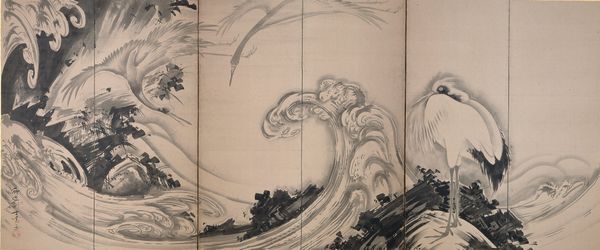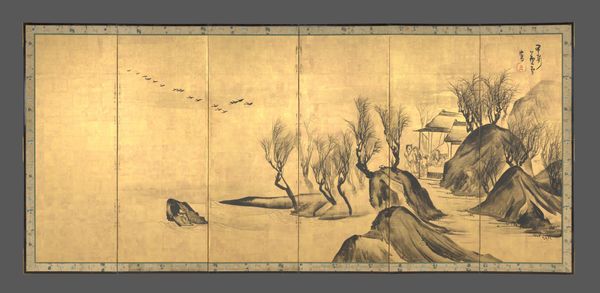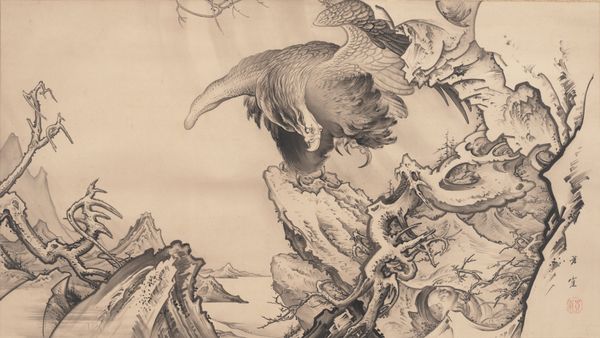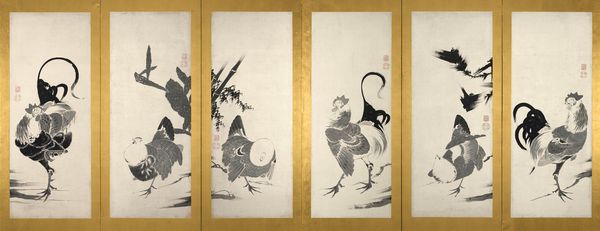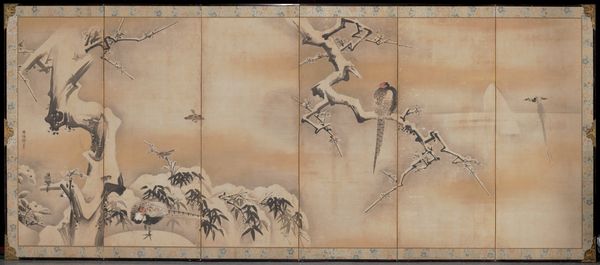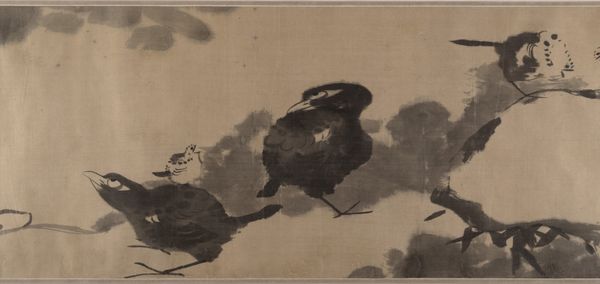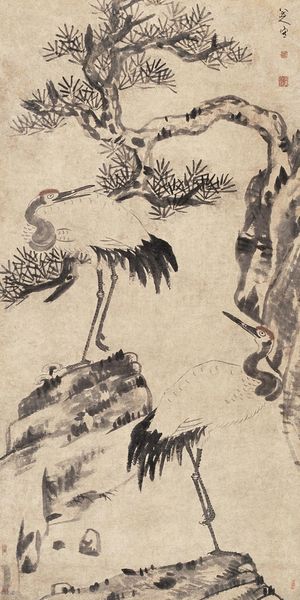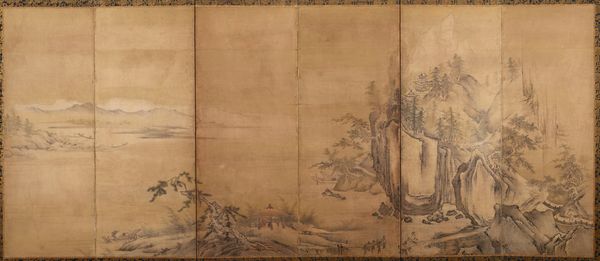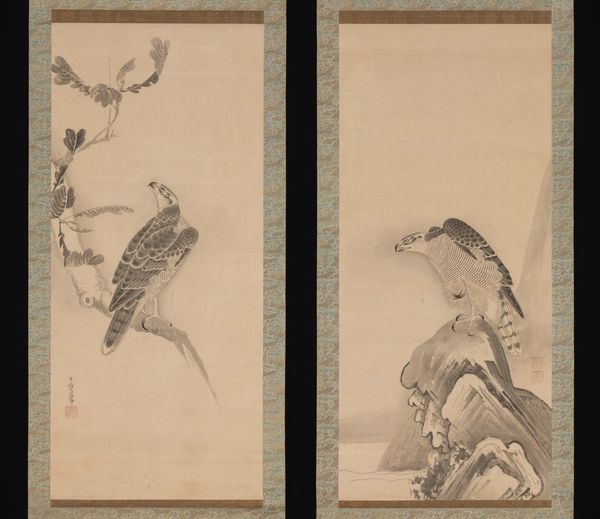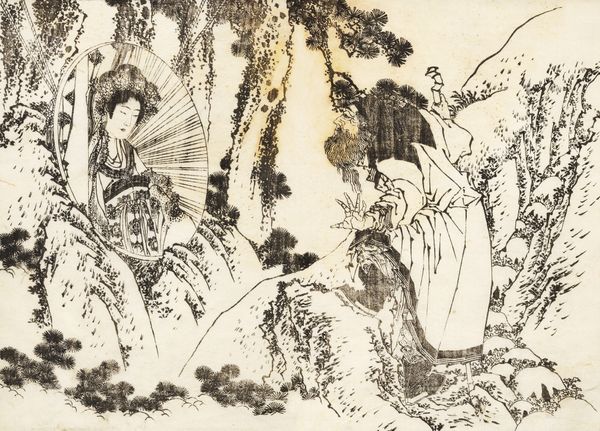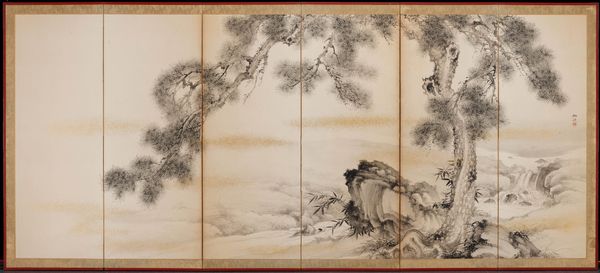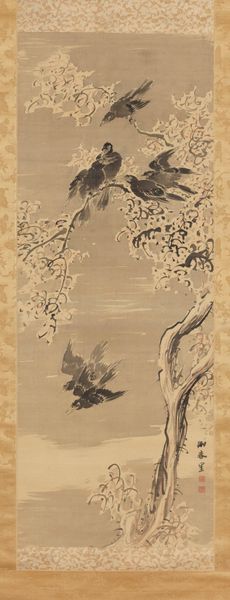![Cranes and Waves [right of a pair] by Soga Shōhaku](/_next/image?url=https%3A%2F%2Fd2w8kbdekdi1gv.cloudfront.net%2FeyJidWNrZXQiOiAiYXJ0ZXJhLWltYWdlcy1idWNrZXQiLCAia2V5IjogImFydHdvcmtzLzJhNGZiMGYzLTVmOGMtNDU2ZC04MzA1LWE3YmM0MTIxMzNkZi8yYTRmYjBmMy01ZjhjLTQ1NmQtODMwNS1hN2JjNDEyMTMzZGZfZnVsbC5qcGciLCAiZWRpdHMiOiB7InJlc2l6ZSI6IHsid2lkdGgiOiAxOTIwLCAiaGVpZ2h0IjogMTkyMCwgImZpdCI6ICJpbnNpZGUifX19&w=3840&q=75)
paper, ink-on-paper, ink
#
ink drawing
#
narrative-art
#
ink painting
#
asian-art
#
landscape
#
ukiyo-e
#
figuration
#
paper
#
ink-on-paper
#
ink
#
line
Dimensions: 60 1/4 × 143 in. (153.04 × 363.22 cm) (image)68 1/2 × 149 in. (173.99 × 378.46 cm)
Copyright: Public Domain
Editor: Here we have "Cranes and Waves," specifically the right panel of a pair, dating back to the 1760s by Soga Shōhaku. It's rendered in ink on paper and currently housed here at the Minneapolis Institute of Art. There’s something so serene yet powerful about the contrast between the delicate cranes and the implied vastness of the waves. What do you see when you look at this piece? Curator: Ah, Shōhaku! He was a real rebel. Imagine him, splashing ink with such controlled abandon in 18th-century Japan. This isn't just a picture of cranes; it's a glimpse into a mind that felt the pull of tradition but danced to its own beat. See how the ink bleeds and pools? It's almost as if the painting is breathing. The cranes, symbols of longevity and good fortune, are not static figures. They possess personality and tension with each other, something Shōhaku was notorious for. What do you make of their expressions? Editor: They do have a sort of…aloof quality, don't they? Not at all sentimental or cutesy like some depictions of birds I've seen. Curator: Exactly! And that’s what makes it so captivating. Shōhaku is inviting us to observe, not just admire. He makes me wonder: What unspoken stories are playing out among these cranes? What secret dramas are being swept along on those ink-drawn waves? It's a very theatrical depiction of life, don’t you agree? Editor: I see what you mean! Before, I was just seeing pretty birds. Now, I'm wondering about their relationships. Curator: Precisely. Shōhaku teaches us to look beyond the surface. He asks us to meet the work where the image meets our own projections. Editor: I'll definitely be spending more time looking at the implied stories instead of only the brushstrokes when viewing art. Curator: Yes! That’s all art can be: one perspective informed and informing others. Now you will see how many birds in paintings tell the same or totally different stories!
Comments
minneapolisinstituteofart about 2 years ago
⋮
Cranes, waves, and pines signify long life and evoke the realm of the immortals, the Daoist paradise Mount Hōrai (Penglai). Cranes also denote happiness and marital fidelity. Shōhaku was celebrated for the eccentricity of both his lifestyle and painting style. Little is known about his life, but it seems that he was born into a merchant family in Kyoto and received some instruction in Kanō school painting. Taking up the life of an itinerant painter, he created many of his unorthodox works of art for temples, where he lodged while travelling the country.(2013.30.14.1-.2)
Join the conversation
Join millions of artists and users on Artera today and experience the ultimate creative platform.
